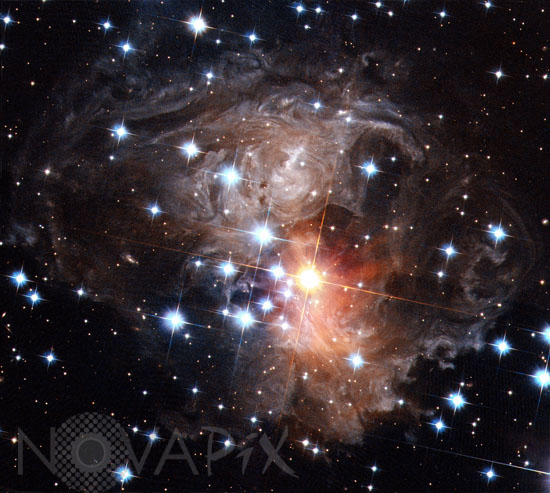Photo Agency - Astronomy - Space - Nature

V838 Monocerotis seen by the Hubble space telescope. 09/2006
author: Nasa/ESA/Stsci/Novapix
reference: a-eto20-00009
Image Size 300 DPI: 28 * 25 cm
Light from a star that erupted nearly five years ago continues propagating outward through a cloud of dust surrounding the star. The light reflects or "echoes" off the dust and then travels to Earth. Because of the extra distance the scattered light travels, it reaches the Earth long after the light from the stellar outburst itself. Therefore, a light echo is an analog of a sound echo produced, for example, when sound from an Alpine yodeler echoes off of the surrounding mountainsides. The echo comes from the unusual variable star V838 Monocerotis (V838 Mon), located 20,000 light-years away on the periphery of our Galaxy. In early 2002, V838 Mon increased in brightness temporarily to become 600,000 times brighter than our Sun. The reason for the eruption is still unclear.
Keywords for this photo:
2006 - ACS - ASTRONOMY - HST - HUBBLE SPACE TELESCOPE - MONOCEROS - STAR - V838 MONOCEROTIS - VARIABLE STAR -
Contact : Stéphane Aubin +33-(0)9-51-26-53-76
© Novapix - All rights reserved


